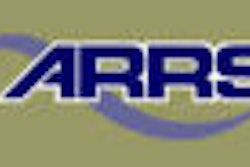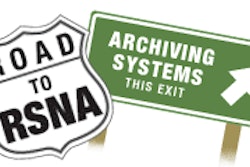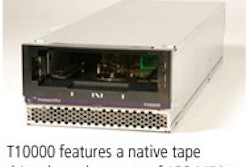There is real long-term value in retaining thin-slice CT data, and institutions should design a storage architecture to keep this data in their PACS network or archive, according to Christopher Meenan, director of clinical information systems (IS) at the University of Maryland Medical Center (UMMC) in Baltimore.
"Storing thin-slice CT data will become best-practice and mission critical," Meenan said. "We believe it will become part of the permanent medical record, and it will double or triple your storage requirements at least."
Meenan spoke during a scientific session at the Society for Computer Applications in Radiology (SCAR) annual meeting, held last week in Austin, TX.
Thin-slice CT data is hard to manage and can't be handled well by most commercial PACS systems, Meenan said.
"Most of them are way too slow to deliver the thin-slice data to the desktop," he said. "And we see a real need to move toward server-side rendering in this space."
Handling these datasets quickly became a mission-critical matter for UMMC, and radiology storage requirements may have quadrupled, according to Meenan.
The institution was facing increased demand for 3D and multiplanar reformats (MPR) based on thin-section datasets, but the PACS was unable to store the tidal wave of data without exhausting the available storage and flooding the radiologist workstations and the institution's network, Meenan said. In addition, UMMC wanted enterprise distribution of 3D capabilities, and CT scanner upgrades were in the works.
"As scanner technology improves, the number of potential images that you generate also goes up," he said.
UMMC began designing a low-cost, high-performance active storage architecture to support future growth in thin-slice archiving, Meenan said.
3D solution
UMMC installed an enterprise-capable 3D system (AquariusNet, TeraRecon, San Mateo, CA), which offered server-side rendering of 3D and MPR. The institution then attached 4 terabytes (TB) of storage to create a single, thin-section archive. All imaging modalities send data to both the PACS and the 3D archive, Meenan said.
All of UMMC's dedicated 3D workstations can query and retrieve data from this archive, and key images are sent back to the PACS for the permanent record, he said. Access around the hospital is also available via the 3D enterprise thin-client application.
"As far as the radiologists were concerned, we have integrated workstations where radiologists can view the fused datasets on PACS, but also have access to the 3D and thin-section dataset on their workstation," he said.
The UMMC team measured the thin-section storage utilization over three months in 2005. A mean of 1,869 CT studies were stored per month, with an average of 643 images per study. Mean total volume was just under 600 gigabytes per month, Meenan said.
The group also surveyed radiologists to gauge their opinion of the system. Among the findings, 43 of 49 (87.8%) radiologists found the system was helpful for diagnosis. When asked where they were using it, 83.7% said they used it in reading rooms and 40% said they were using it in offices or other areas.
Fifty-one percent wanted thin-section CT data to be available for at least six months, with 18.4% wanting the data to be available for a year, Meenan said.
"The system was actively used and met with early approval from the majority of users," he said. "They were using it and were liking it, and thought it was helpful for diagnosis."
The auxiliary archive supported enterprise distribution and availability of thin-section CT data for up to five months (in 2005), and proved to be a valuable accessory tool for the institution's main PACS network, Meenan said.
"Longer term availability of (thin-section) data would really have to increase our storage requirements," he said.
As of April 2006, UMMC has completed its CT scanner upgrades, and now has two 64-channel scanners, three 40-channel scanners, and one 16-channel scanner. The institution has also moved to 8 TB of online storage for the thin-section archive, which now holds 90 days' worth of storage.
UMMC hopes to move to a single thin-section archive, not just to decrease the impact on technologist workflow but to offer longer-term availability of data to radiologists, Meenan said.
"They should have access to data for more than just a month or a day," he said. "They should be able to have it whenever they want."
The center also would like to take advantage of new disk storage designs for density, scalability, and performance benefits, with the goal of storing 20 TB per year in the single thin-section archive, Meenan said.
By Erik L. Ridley
AuntMinnie.com staff writer
May 2, 2006
Related Reading
Lab model may be most efficient for advanced image processing, April 30, 2006
Technologists take advantage of 3D opportunity, April 25, 2006
Expanded role looms for 3D in breast imaging, April 11, 2006
Setting up a cutting edge 3D lab, April 7, 2006
Technological advances drive new 3D CPT codes, February 21, 2006
Copyright © 2006 AuntMinnie.com



















